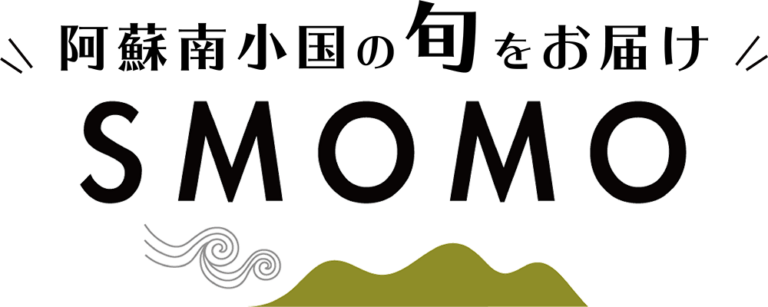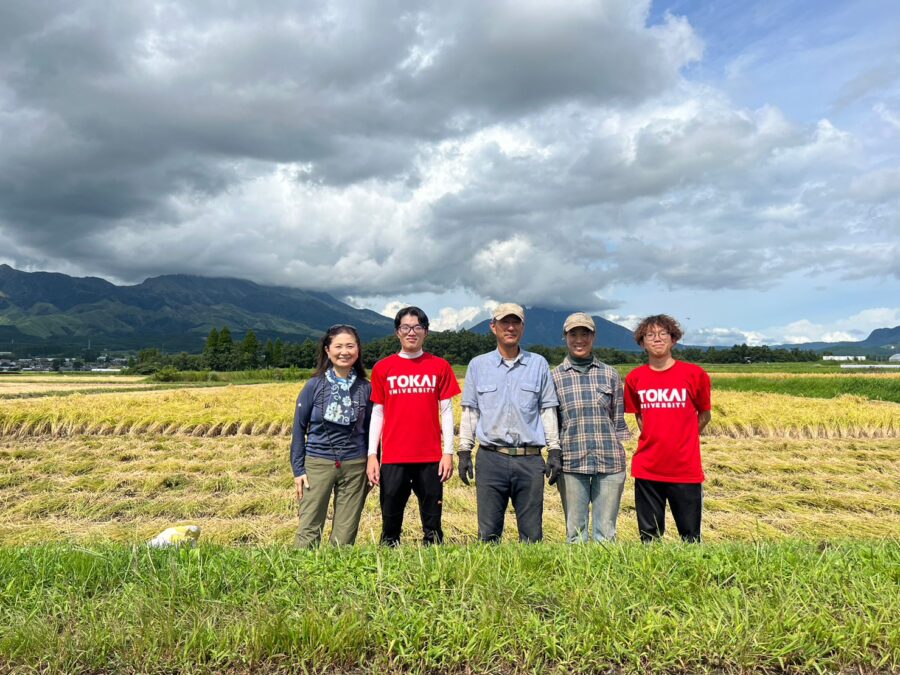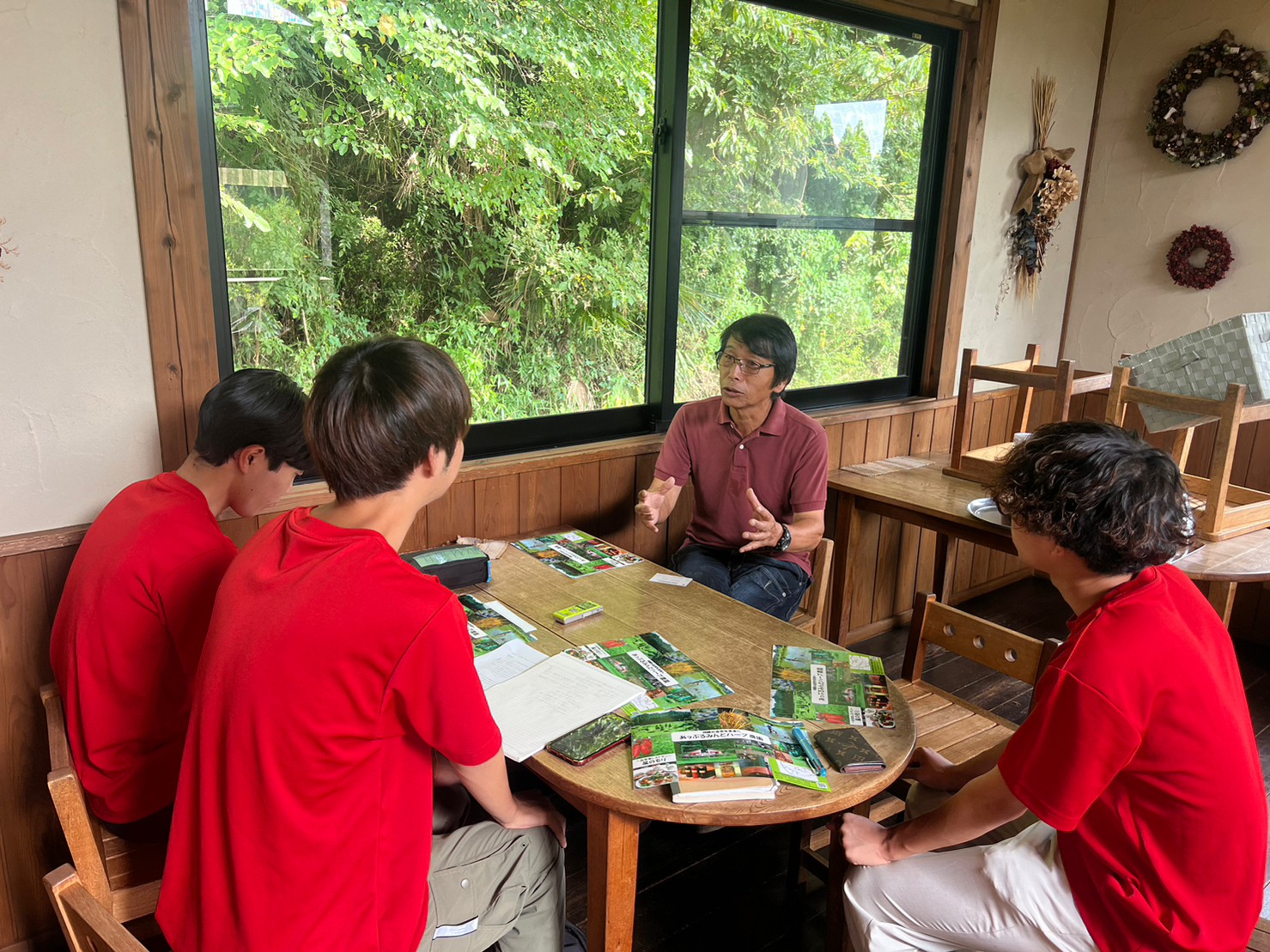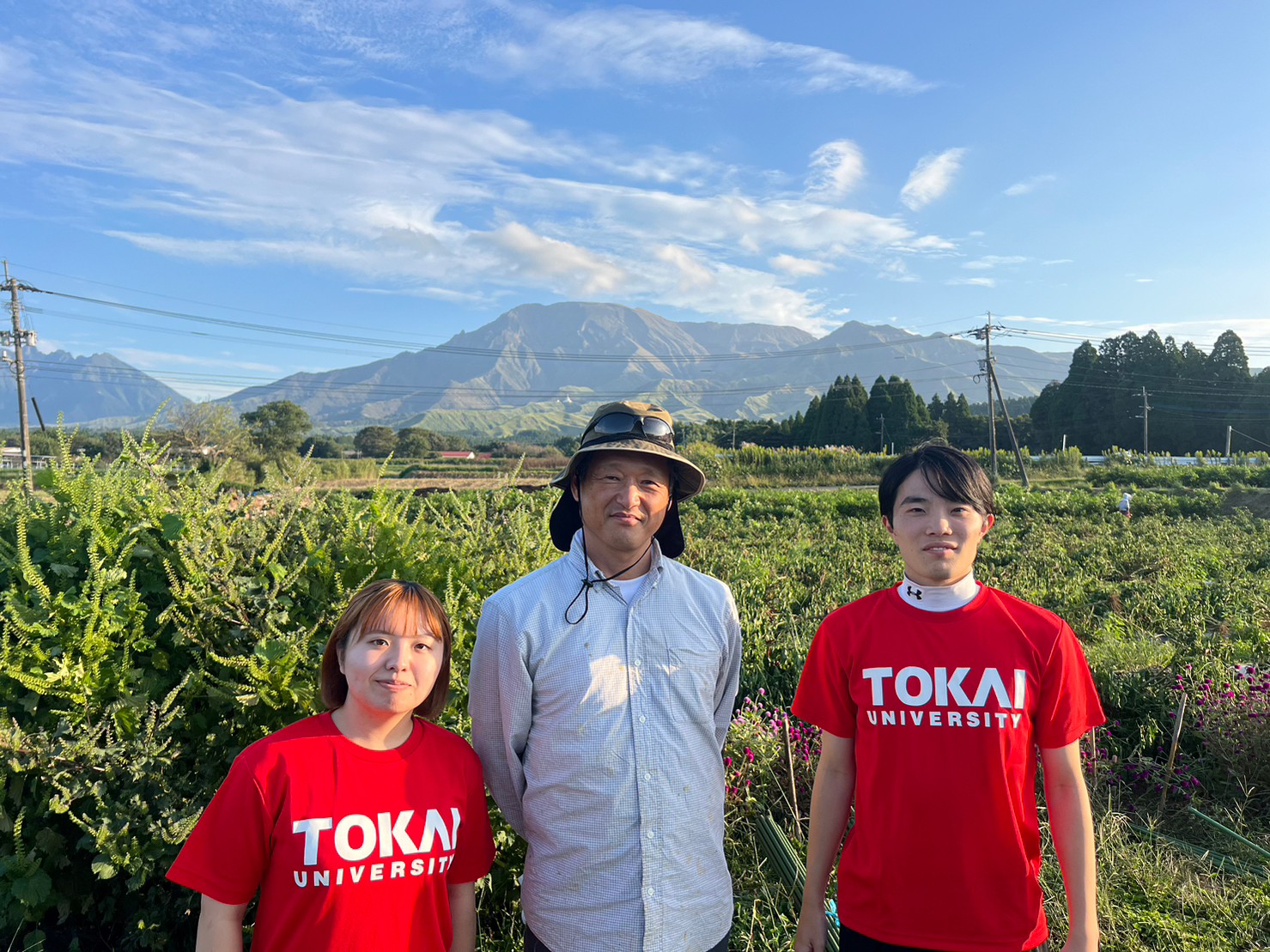Celebrating the 10th anniversary of “Global Agricultural Heritage Aso” certification
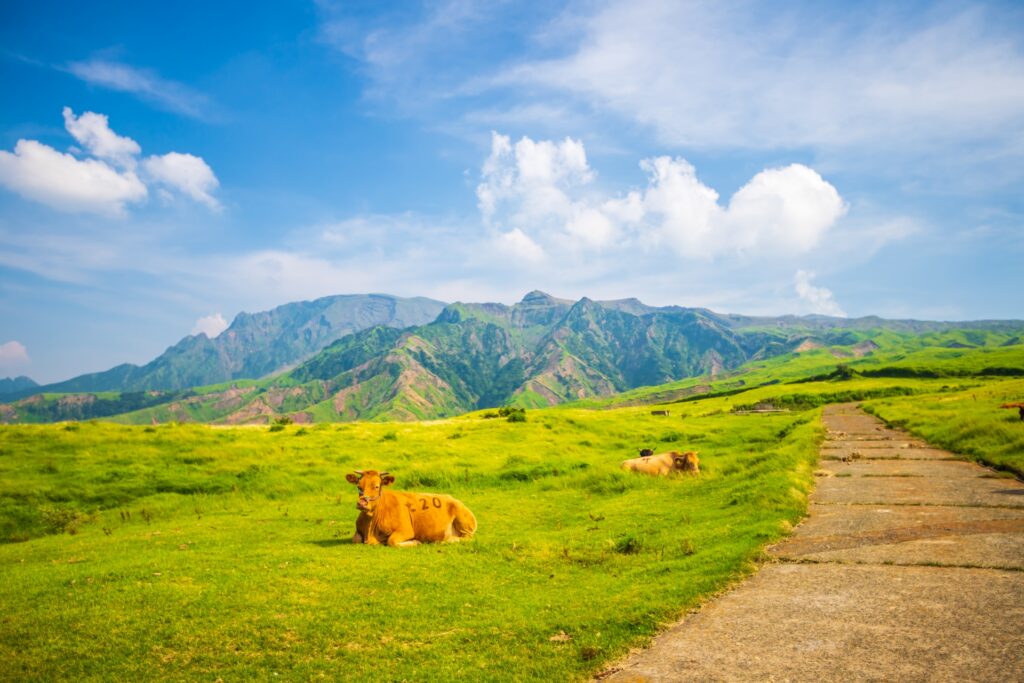
The grasslands of the Aso region have been maintained through agriculture such as burning and grazing for more than 1000 years.
Aso, which has grown together with grasslands, is blessed with diverse agriculture, rare flora and fauna, and traditional farming culture.Aso was recognized as a Global Agricultural Heritage Site in May 2013 as being of global value. We are celebrating our 5th anniversary.

The Tokai University Ecotourism Research Group conducts research activities to learn about ``ecotourism,'' a system that preserves and utilizes regional treasures.
To commemorate the 10th anniversary of the World Agricultural Heritage designation, students from the Ecotourism Study Group visited and interviewed people who support Aso's agriculture in order to learn more about the agriculture, culture, and history that are the treasures of the Aso region. .
[Speaking of Aso? ]
Everybody,AsoWhat comes to mind when you say that?
My image of Aso is perfect.It's a vast prairie that stretches out over the entire area!
Isn't your image the same?
A blue sky above, a green meadow in front of you, and a pleasant breezeI'm impressed!
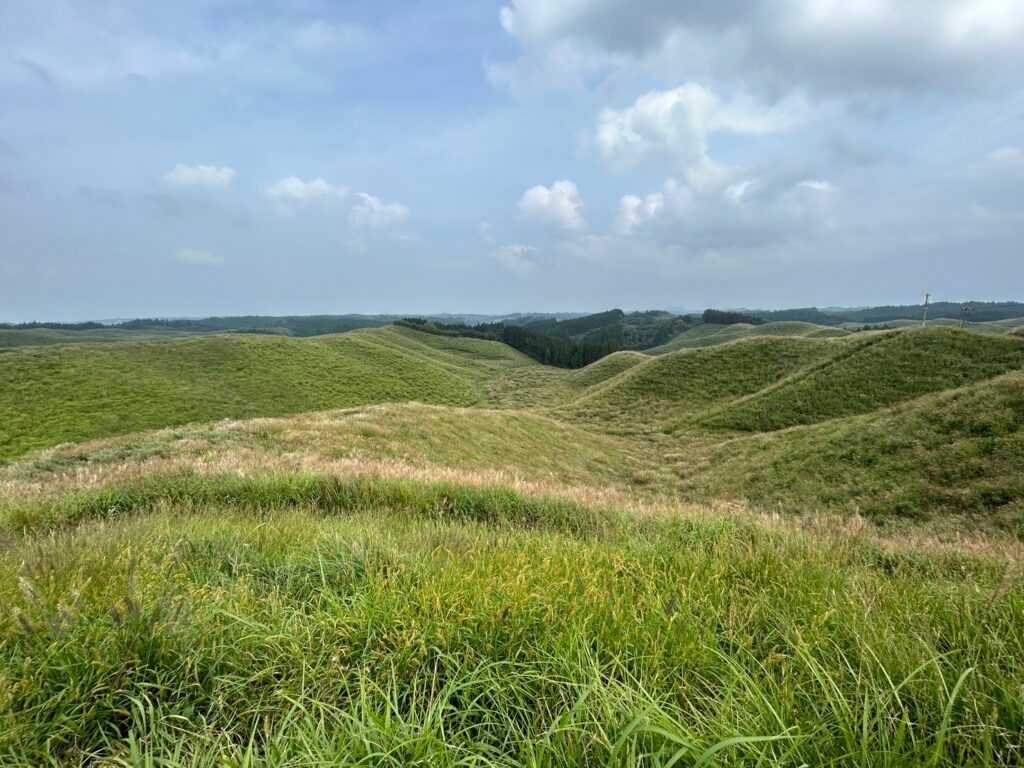
This time, in Aso, we practice recycling-oriented agriculture that utilizes open burning, grazing, and grasslands, and are involved in maintaining Aso's grasslands.Keikichi IchiharaI was interviewed!Mr. Ichihara also conducts educational activities to convey the value of grasslands to children, and is a leading expert on the value of Aso.
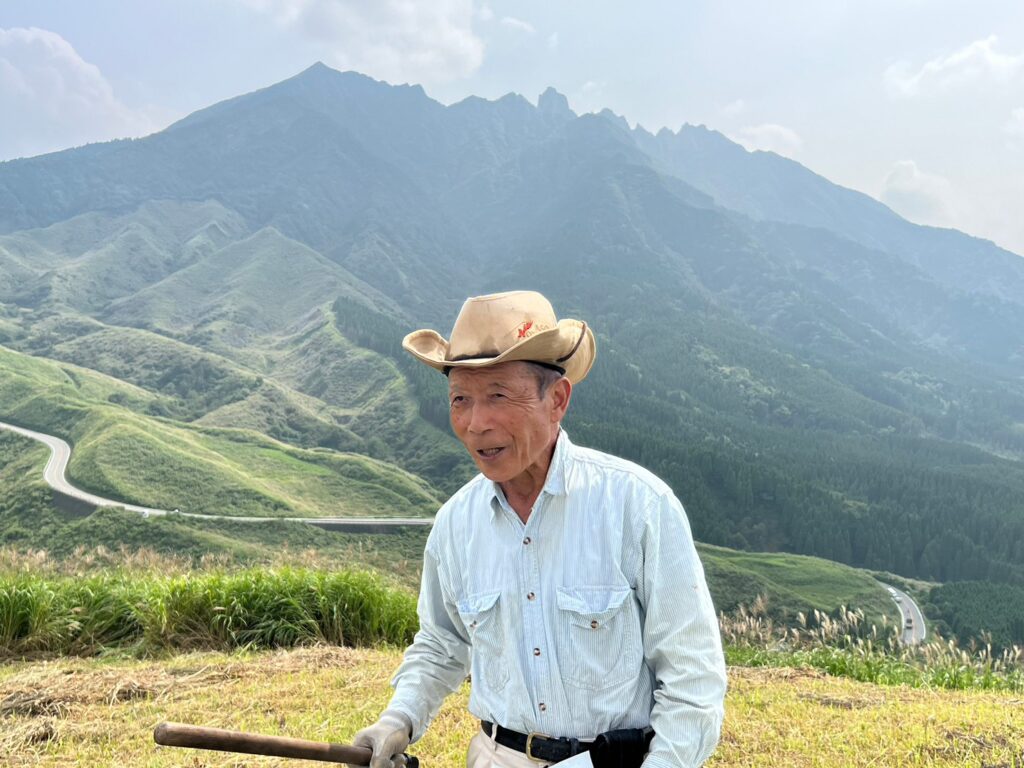
[What is the need to inherit grasslands? ]
In my university classes, I learned that the great nature of Aso has existed for thousands of years, and that its history and culture have been passed down from generation to generation by local people.However, I didn't know why we were protecting nature and culture.
So I asked Mr. Ichihara my honest questions.
---Why have you maintained grasslands for so many years, and what value does Aso's nature have?
Mr. Ichihara: Maintaining grasslands is a really difficult task.The field burning that is carried out every spring requires a large number of people, and setting fire to withered grasslands is dangerous and grueling work.But if you don't keep doing that, new grass won't grow.If you leave the grassland alone, it will eventually turn into a forest.
For us farmers who have raised cattle and horses, grasslands are an important place for fattening.In order to secure winter feed for cows and horses, the grass in the meadows is cut by hand, dried, and stored in piles called grass piles, which are then used as winter feed.As farmers, we have continued to maintain and manage the grassland throughout the year, and as a result we have been able to maintain the lush green grassland that spreads out in front of our eyes.
Also, Mr. IchiharaCurrent challenges in grassland maintenanceHe told me.
Mr. Ichihara:The fact that this type of agriculture has been passed down through generations is the reason why the Aso region has been recognized as a World Agricultural Heritage Site.Tourists who come to Aso also come to see the beautiful grasslands that have been maintained using traditional methods.But now, the grass piling that used to be done by hand is now done by machines, and as the population ages, there are fewer farmers grazing.Due to changes in industry and a lack of successors, in many places it is no longer possible to maintain grasslands using old methods.
However, I believe that this traditional agriculture itself is an important part of the local culture, and an important treasure that should be passed on to the next generation.That's why I want to continue the traditional activities of grass piling and field burning, so that the younger generation can realize how difficult it is to maintain grasslands and understand the value of grasslands. is.
[Challenge the grass piling experience! ]
Mr. Ichihara taught us the technique of making grass piles, which he does every year at this time of year, and we had the opportunity to experience making our own grass piles.
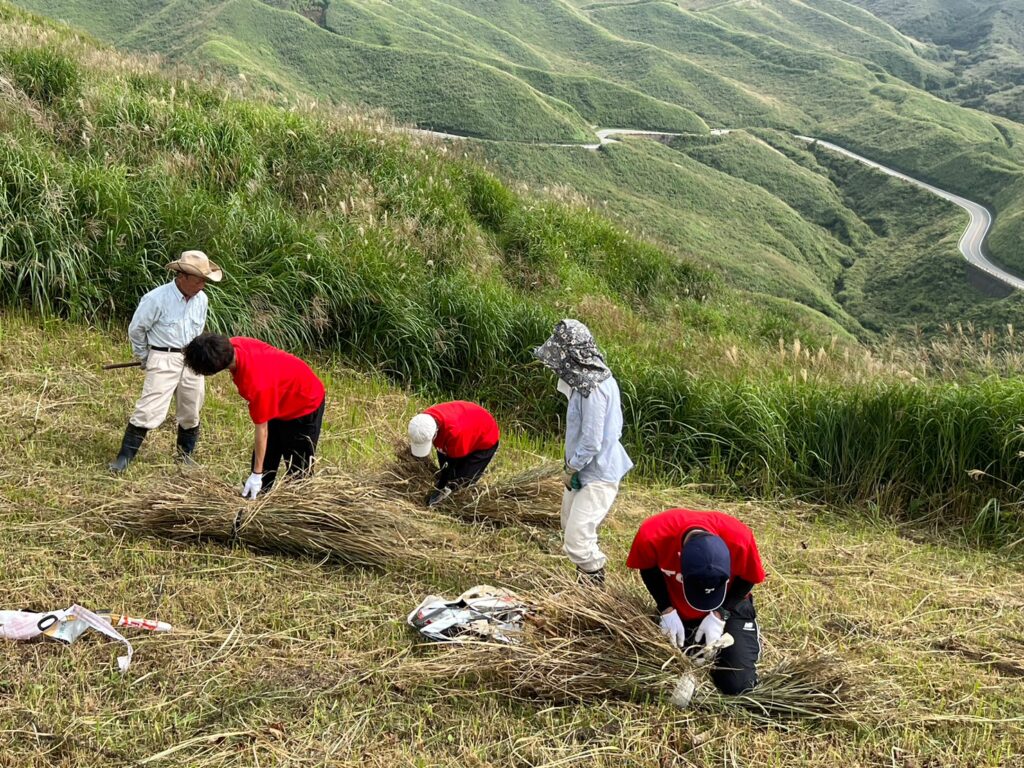
First, the grassland grass is cut by hand and left to dry in the sun for a while.I started by tying the dried kaya into a certain amount of bundles.
I learned that it is important to use a hoe and your body to gather the grass in small piles.However, this task was difficult to complete and I had a lot of trouble.
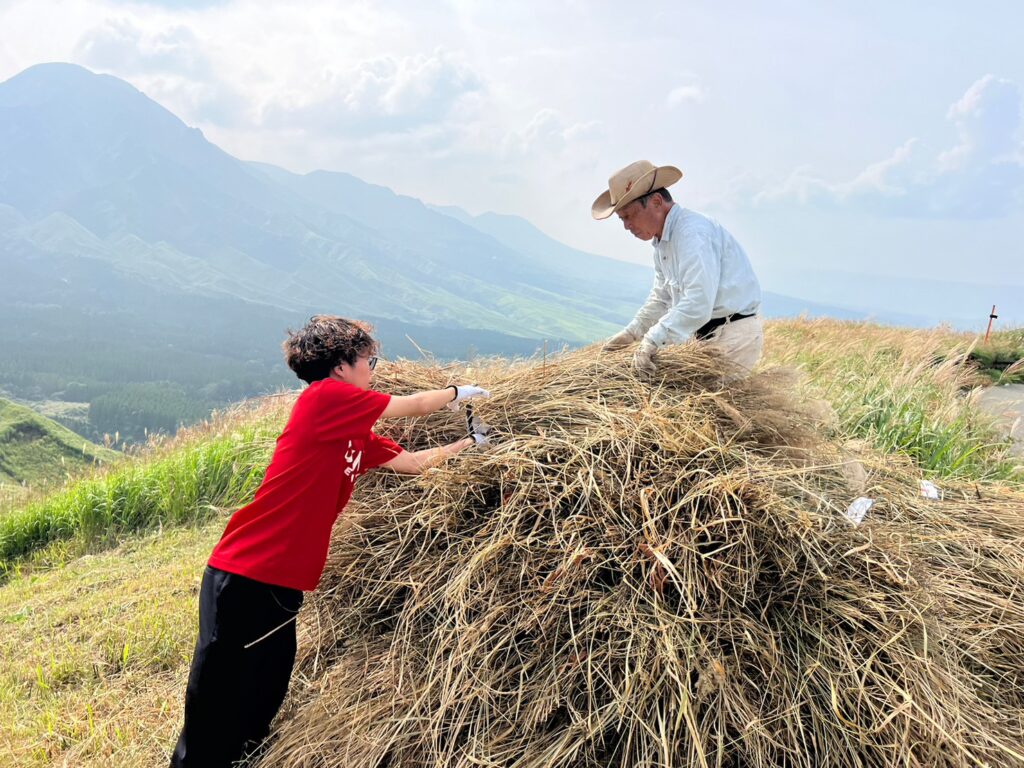
Pile these up in a circle, spread grass to serve as a roof, and you're done.
Just when I thought I had finally completed one, I was told that I needed a total of 40 sets of this small pile.Just the thought of building one over a grassy area was daunting.
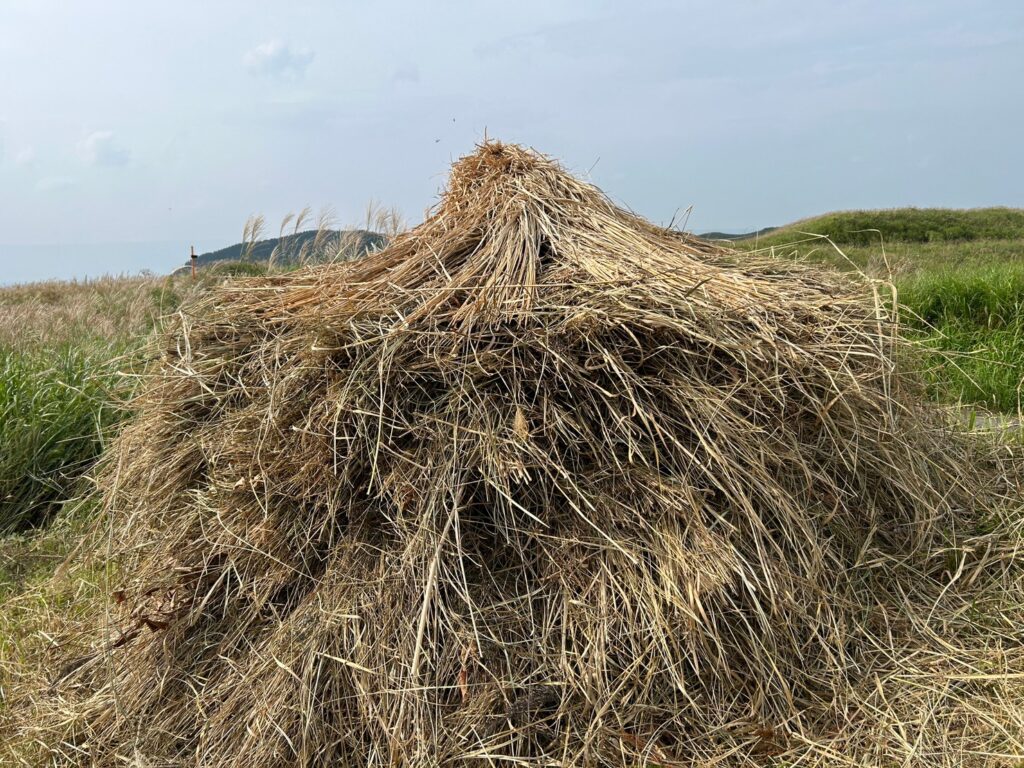
Six people worked on it and it took about 6 minutes to complete.It took a long time to experience the grass piling, but I really enjoyed it because it felt like I was actually interacting with the great nature of Aso!
Mr. Ichihara says that he and his wife always carry out the grass collection activities together.For the first time, I learned firsthand the hard work that Aso farmers put into maintaining grasslands.
---What problems does Aso currently face in maintaining grasslands and continuing agriculture?
Mr. Ichihara:After all, there is no successor.No matter how much we continue our agricultural and grassland conservation activities, it will not continue unless there is a successor.We don't want to simply abandon the grasslands that we have spent so many years protecting, but there are some places that are in a situation where they have to.
Although we would like to continue preserving Aso's historic landscape, it is also true that the number of human resources is decreasing and there are fewer opportunities for training than in the past.I realized how difficult it is to continue grassland conservation activities that require labor throughout the year.
[What we can do to maintain grasslands]
――――Like us“General tourists” What can you do?.
Mr. Ichihara:There are tours that allow you to experience the natural environment unique to Aso.Through this experience, we want tourists to realize the good things about grasslands, as well as the dangers of burning fields.And I want you to spread it to other people through SNS and word of mouth.
It's a great pleasure for us, the locals, to have people come to Aso for sightseeing.But if we don't create a system where the money goes to us, maintaining grasslands, which are a tourist resource, will only become a huge burden on us.This burden can be one of the reasons why residents go bankrupt financially.
Therefore, it would be great if there was an economic support system, such as a maintenance fee of 1 yen per person, that would strengthen the ties between tourism and local residents, so that they could both be happy and develop together. nice.
Just learn about Aso and tell your friends.
He said that he hopes to have fun while expanding his community and deepening his understanding of Aso through these activities.
I also learned that from the perspective of economic support, our small contribution as a tourist can help maintain grasslands.
---Mr. Ichihara, what efforts are you making to resolve issues such as the lack of successors?
Mr. Ichihara: We planned a program in which children could ride their bicycles in areas where there were no grazing cows after mowing, and we also gave children a chance to experience horseback riding.Through activities using grasslands, we offer experiences that will help you realize for yourself what treasures grasslands are.
During the grass piling experience, while I really enjoyed the feeling of coming into contact with Aso's nature, I was also able to learn for myself how difficult it is to maintain grasslands through this activity.
Mr. Ichihara told me that through this experience, he is trying to convey to students and children the idea of ``helping them understand the charm and value of grasslands, and helping them realize for themselves that grasslands are regional treasures.''
[What we can do to preserve Aso's grasslands]
Mr. Ichihara told us about activities that we can easily contribute to the conservation of grasslands.
That was started by Mr. Ichihara and his colleagues."Aso Grassland Restoration Sticker"This is the activity of what is commonly known as the "Seal Society."
On October 2023, 10, the "Kyushu Global Agricultural Heritage Fair" was held at Nobi Place Plaza, Kamidori-cho, Chuo-ku, Kumamoto City.
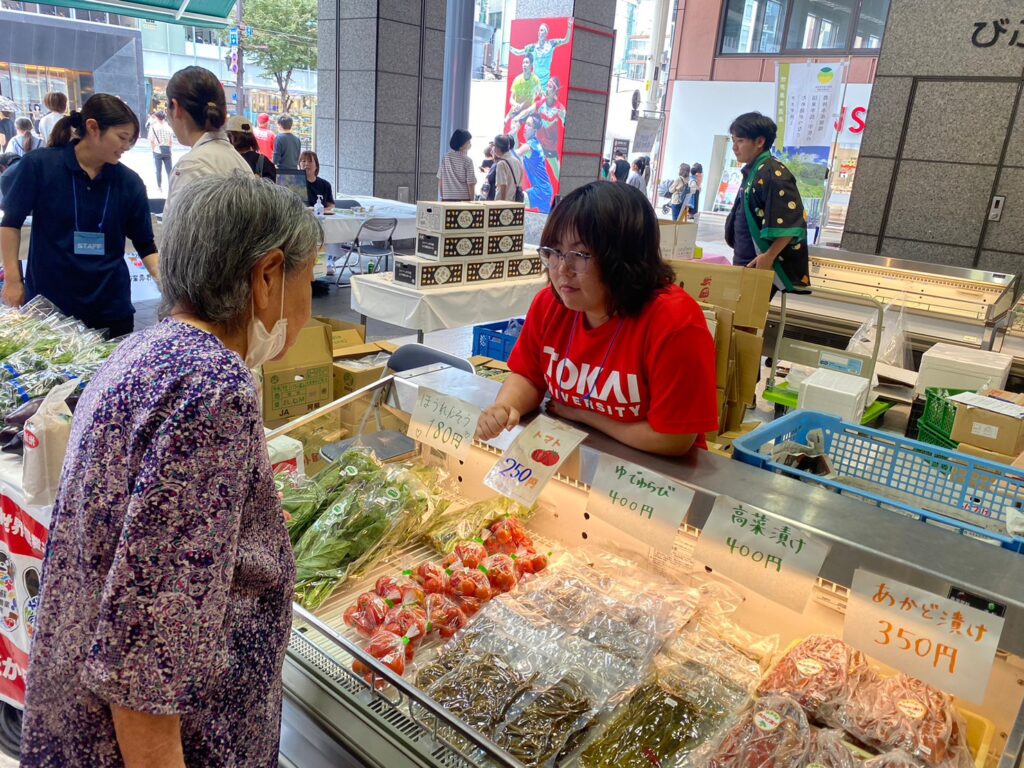
We students also went to help with the sales!
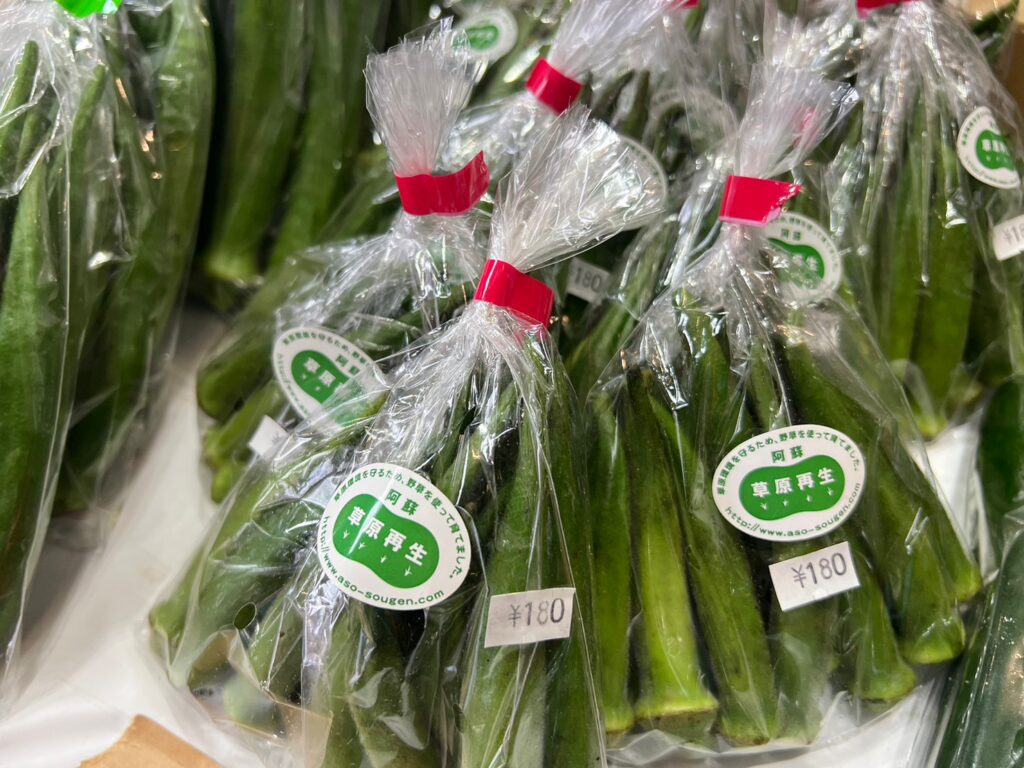
The one shown in the photo above is the "Aso Grassland Regeneration Sticker."
The vegetables with the stickers are grown using wildflowers from the grasslands of Aso as compost.By purchasing these vegetables, profits will be returned to farmers and the maintenance of Aso's grasslands.
In other words, this is a system that allows consumers to indirectly help maintain Aso's grasslands!
Click here for more information about the Seal Society:https://www.aso-sougen.com/act/farmers/
Don't you think it's a wonderful initiative to protect Aso's grasslands by purchasing delicious vegetables?
Mr. Ichihara's group uses this sticker to promote the value of Aso, which has been certified as a Global Agricultural Heritage Site.
These vegetables are sold at roadside stations and direct sales stores in the Aso area!
Please help us regenerate grasslands by purchasing vegetables!
【in conclusion】
Mr. Ichihara continued traditional grassland maintenance activities and farming, and worked to make the world aware of the charm and value of grasslands by using grassland activities and grassland restoration stickers.
Through these efforts, I felt that the general public was interested in Aso's grassland conservation and hoped to change their behavior in the future.
Also, what we can do now that we know the value of Aso is to eat red beef and buy vegetables with grassland restoration stickers.
I would like to start small to protect Aso's nature!

Tokai University Ecotourism Research Group
XNUMXnd year Masashi Hirakawa
